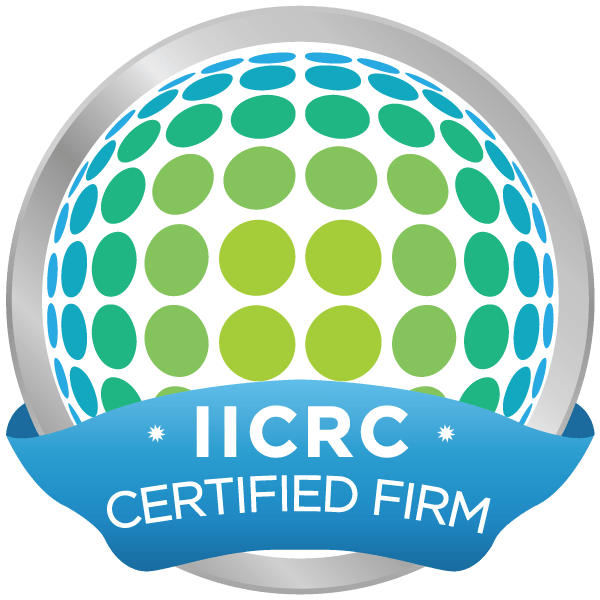What happens if water gets in your walls? Water infiltration can cause severe damage and put your home at significant risk. Understanding the risks and damages associated with water in walls is essential for any homeowner to maintain the structural integrity and health of their house.
In this section, we will discuss the consequences of water infiltration and the risks and damages that come with it. From mold growth to weakened supports, we will explore the potential harm that water can cause to your home.
Key Takeaways:
- Water infiltration can cause significant damage and put your home at risk.
- Prolonged exposure to water can lead to mold growth and structural issues.
- Early recognition of water infiltration signs is crucial to preventing further harm.
- Water can weaken supports and cause damage to insulation and electrical systems.
- Addressing water infiltration promptly can prevent long-term damage and promote home safety.
Signs of Water Infiltration in Walls
Identifying the signs of water infiltration in your walls is crucial for the early detection of potential problems. Once water has made its way into your walls, it can cause significant damage to your home and pose health risks to you and your family. Here are some common indicators:
- Water stains: Look for discoloration on your walls or ceilings that can be yellow, brown, or gray.
- Dampness: Touch your walls and look for dampness or moisture that can indicate water infiltration.
- Musty odors: If you notice a persistent musty smell, it may be a sign of mold growth caused by infiltrating water.
- Peeling or bubbling paint: If your paint is starting to peel or bubble, it may be due to moisture damage caused by water infiltration.
It’s essential to take note of these signs of water infiltration and take prompt action to avoid further damage to your home and health risks to you and your loved ones.
The Impact of Water on Wall Structure
Water infiltrating your walls can have a serious impact on their structural integrity. Prolonged exposure to moisture can lead to weakened supports, rotting wood, and compromised stability. These effects can be especially pronounced in older homes with outdated building materials or in areas prone to heavy rainfall or floods.
Water can seep into even the smallest cracks or gaps, leading to the gradual deterioration of the wall’s internal structure. Over time, this can cause sagging or bulging in the affected areas and compromise the overall stability of the wall. This can also lead to dangerous situations where the wall may collapse if left untreated.
It is essential to act quickly and address any sign of water infiltration in your walls to protect the structural integrity of your home.
Preventing and mitigating water infiltration can save you from costly repairs and even structural renovations that could have been avoided. Regularly inspect your home’s walls and foundations for any signs of damage, especially after bouts of heavy rain, and have a professional assess and address any issues promptly.
Mold Growth and Health Risks
Mold growth is a common consequence of water infiltration in your walls. When there is moisture, warm temperatures, organic materials, and lack of light, mold spores can grow and spread easily. Mold can have severe health effects, especially on people with allergies or asthma. That’s why it’s crucial to address mold growth promptly and prevent it from spreading.
Exposure to mold can cause various health risks, including:
- Allergic reactions – such as sneezing, runny nose, red eyes, and skin rash
- Respiratory issues – such as coughing, wheezing, and difficulty breathing
- Headaches and dizziness – especially if the mold growth is extensive and prolonged
- Chronic health conditions – such as infections, immune system disorders, and neurological problems
In addition to health risks, mold growth can also lead to a foul smell, staining, and damage to your walls. To prevent mold growth, it’s essential to keep your home well-ventilated, fix any leaks or water damage promptly, and maintain proper humidity levels.
Damage to Insulation and Electrical Systems
Water infiltration can cause significant damage to insulation materials and electrical systems within your walls. Insulation is designed to keep your home warm in the winter months and cool during the summer. When insulation becomes saturated, it loses its ability to prevent the transfer of heat and cold, which can significantly impact your home’s energy efficiency.
Additionally, water can damage electrical wiring and components within your walls, increasing the risk of electrical hazards such as short circuits and electrical fires. Water can cause corrosion and rust, which can weaken the electrical system and create issues that are expensive to repair.
To avoid damage to your home’s insulation and electrical systems, it’s essential to address water infiltration promptly. Consider investing in a professional assessment of your home’s insulation and electrical systems if you suspect water damage.
| Effects of Water Damage to Insulation and Electrical Systems | Consequences of Delayed Repairs |
|---|---|
| Decreased energy efficiency | Increased repair costs |
| Risk of mold growth on insulation | Damage to electrical components |
| Poor air quality | Decreased property value |
If left unaddressed, water infiltration can result in expensive repairs that can impact the safety and health of your home. Be proactive in assessing and addressing water infiltration issues to mitigate potential damage to your insulation and electrical systems, as well as safeguard your property and loved ones.
Conclusion
Now that you understand the risks associated with water infiltration in your walls, it’s essential to take action promptly. Early detection and intervention can help prevent long-term damage to your home and keep you and your family safe. Remember to look out for common signs of water infiltration, such as water stains, dampness, and musty odors. If you notice any of these indicators or suspect water in your walls, it’s best to contact a professional for further assessment. Ignoring the problem can lead to irreversible structural damage, mold growth, and potential health risks. By addressing water infiltration promptly, you can protect your home’s stability and maintain a healthy living environment for you and your loved ones.
FAQ
What are the consequences of water infiltration in walls?
Water infiltration in walls can lead to various risks and damages. It can cause mold growth, structural issues, weakening of supports, rotting wood, and compromised stability.
How can I recognize signs of water infiltration in walls?
There are several signs to look out for, including water stains, dampness, musty odors, and peeling or bubbling paint. These indicators can help identify potential problems early on.
How does water impact the structure of walls?
Prolonged exposure to water can have a detrimental effect on the structural integrity of walls. It can weaken supports, cause rotting wood, and compromise stability, leading to potential structural issues.
Why is mold growth a concern when there is water in walls?
Water in walls provides an optimal environment for mold growth. Mold can pose health risks, including allergies, respiratory issues, and other potential health complications.
How does water infiltration damage insulation and electrical systems in walls?
Water infiltration can damage insulation materials and electrical systems within walls. It can reduce the effectiveness of insulation and pose hazards to electrical components.








